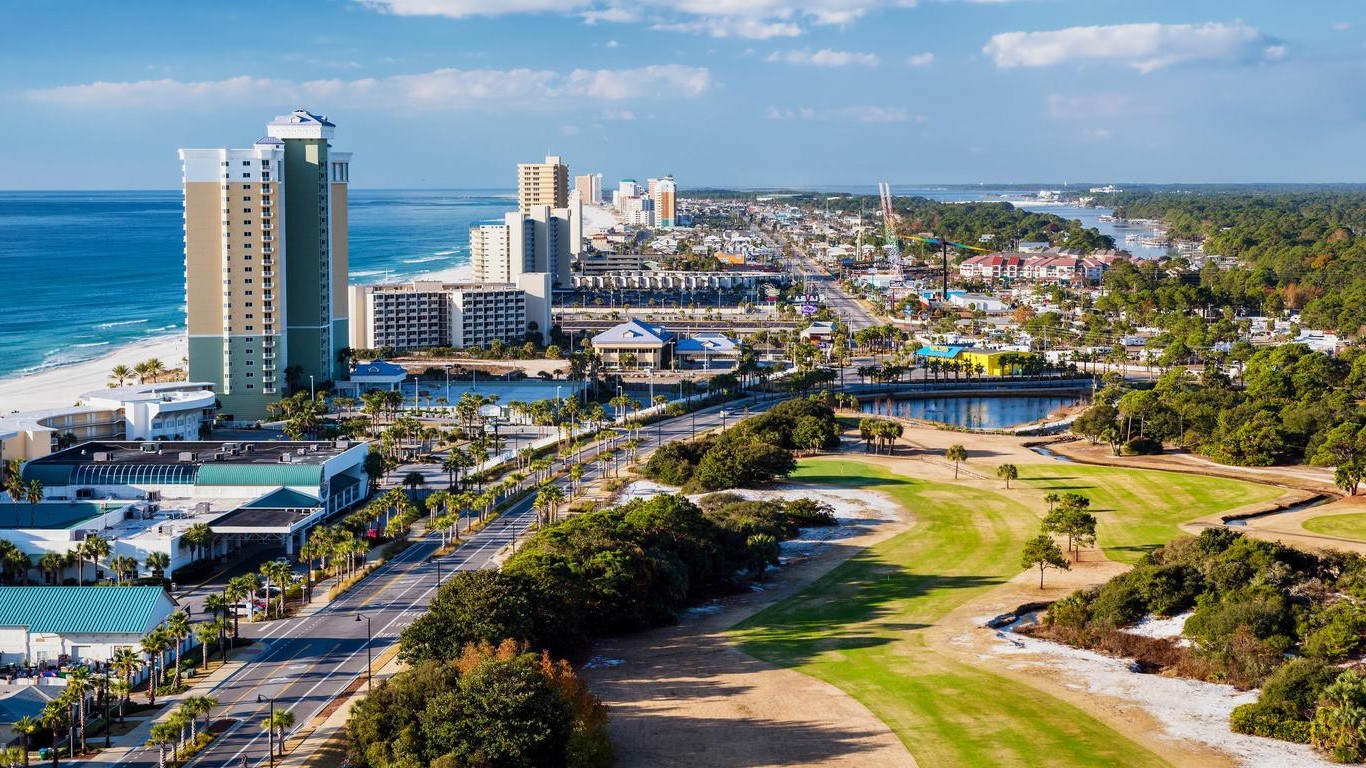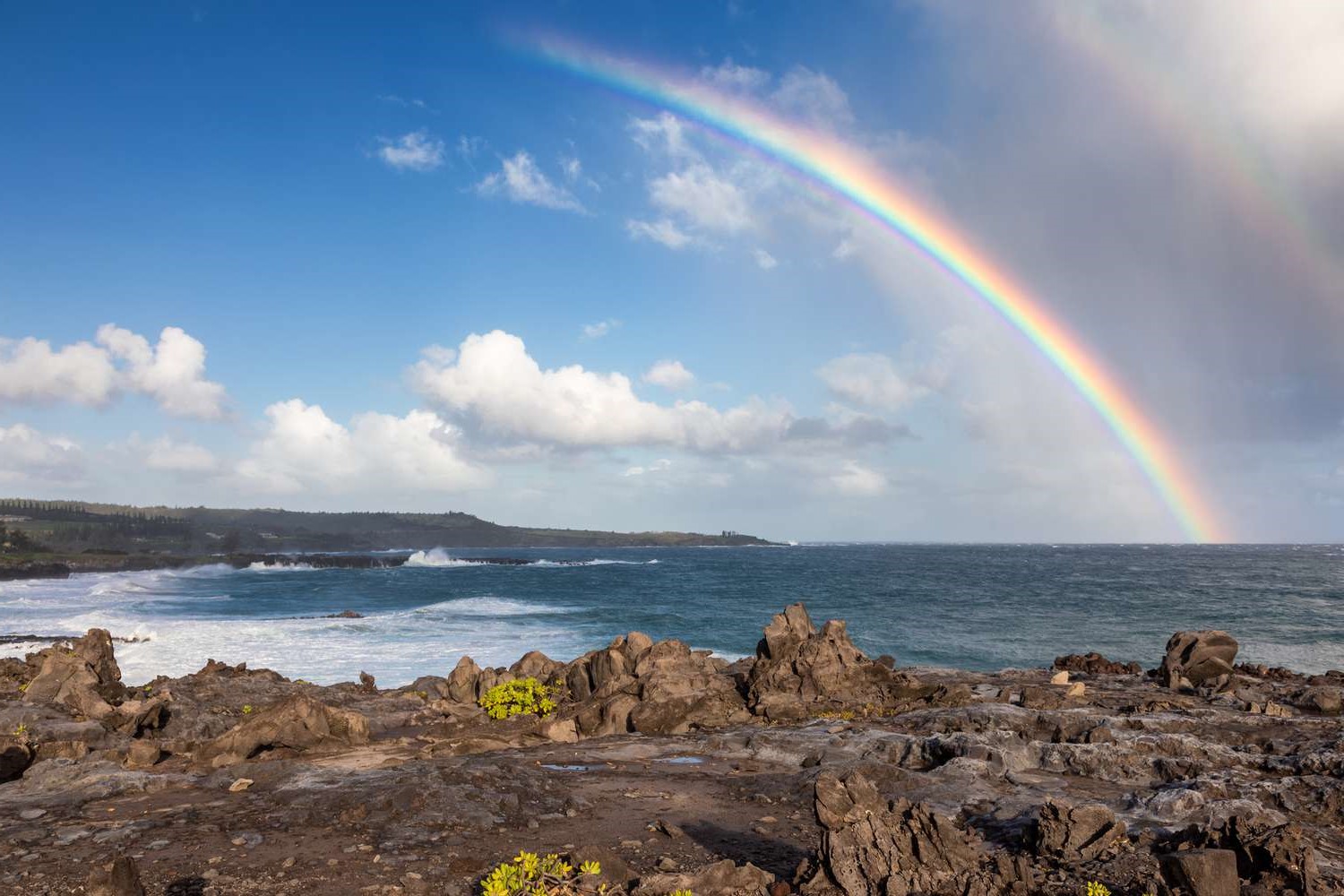Home>Weather and Climate>Average Temperature In Florida During February: What To Expect


Weather and Climate
Average Temperature In Florida During February: What To Expect
Published: March 1, 2024
Discover the weather and climate in Florida during February, including average temperatures and what to expect. Plan your trip with confidence!
(Many of the links in this article redirect to a specific reviewed product. Your purchase of these products through affiliate links helps to generate commission for Temperatures.com, at no extra cost. Learn more)
Table of Contents
Understanding Florida's Climate
Florida, known as the Sunshine State, boasts a diverse climate influenced by its unique geographical features and proximity to the tropics. The state's climate is characterized by its mild winters and hot, humid summers, making it a popular destination for travelers seeking warmth and sunshine. Understanding the nuances of Florida's climate is essential for anyone planning a trip to the state, especially during the month of February.
Florida's climate is largely influenced by its peninsular shape, surrounded by the Atlantic Ocean and the Gulf of Mexico. This positioning exposes the state to maritime influences, resulting in relatively moderate temperature fluctuations throughout the year. The state's southern location also places it within the subtropical and tropical climate zones, contributing to its warm and humid conditions.
The winter months in Florida, including February, are generally mild and pleasant, with average temperatures varying across the state. Southern Florida experiences warmer temperatures compared to the northern regions, with the Florida Keys enjoying the mildest winter climate in the state. This variation is attributed to the moderating effects of the surrounding bodies of water, which help regulate temperatures and create a more temperate environment.
The state's climate is also influenced by prevailing wind patterns, such as the trade winds, which contribute to the overall warmth and humidity experienced in Florida. These winds play a crucial role in shaping the state's weather patterns, particularly during the winter months when they help maintain the mild temperatures and contribute to the state's reputation for sunny, balmy days.
In addition to its geographical and meteorological influences, Florida's climate is also impacted by occasional weather phenomena, such as cold fronts and the El Niño Southern Oscillation (ENSO). These factors can lead to temporary deviations from the typical weather patterns, affecting temperatures and precipitation levels during the winter months.
Understanding Florida's climate provides valuable insight for travelers planning a visit to the state in February. Whether exploring the vibrant cities, relaxing on the pristine beaches, or immersing oneself in the natural beauty of Florida's diverse landscapes, being aware of the state's climate sets the stage for an enjoyable and well-prepared trip.
Read more: February Average Temperature: What To Expect
Historical Average Temperature in February
In February, Florida experiences a delightful transition from the cooler winter months to the gradual onset of spring, characterized by mild temperatures and abundant sunshine. The historical average temperature in February varies across the state, reflecting the diverse climatic conditions that define Florida's unique appeal.
Southern Florida, including cities like Miami and Key West, typically enjoys warmer temperatures during February, with average highs ranging from the mid-70s to low 80s Fahrenheit (approximately 24-28 degrees Celsius). Meanwhile, the northern regions of the state, including cities like Jacksonville and Tallahassee, tend to experience slightly cooler average highs in the upper 60s to low 70s Fahrenheit (approximately 20-23 degrees Celsius). These variations in temperature are influenced by Florida's geographical expanse and its proximity to the surrounding bodies of water, which play a pivotal role in moderating the climate.
During the evenings and early mornings, temperatures in February can dip to more refreshing levels, especially in the northern parts of the state, where average lows range from the upper 40s to mid-50s Fahrenheit (approximately 8-13 degrees Celsius). In contrast, the southern regions experience milder nighttime temperatures, with average lows in the 60s Fahrenheit (approximately 15-18 degrees Celsius). These cooler nighttime temperatures offer a pleasant contrast to the warmth of the daytime, creating an inviting atmosphere for outdoor activities and evening strolls.
The historical average temperature in February sets the stage for a wide array of recreational opportunities across Florida. Whether it's basking in the sun on the pristine beaches, exploring the state's diverse ecosystems, or indulging in outdoor dining and entertainment, the mild and inviting temperatures create an ideal environment for visitors to immerse themselves in the Sunshine State's natural beauty and vibrant culture.
Understanding the historical average temperature in February provides valuable insights for travelers seeking to make the most of their visit to Florida. Whether planning beach getaways, nature excursions, or urban explorations, being aware of the typical temperature ranges allows visitors to pack accordingly and tailor their activities to the prevailing weather conditions. This historical perspective serves as a valuable guide for making informed decisions and ensuring a memorable and enjoyable experience in Florida during the enchanting month of February.
Factors Affecting February Temperatures in Florida
The temperatures experienced in Florida during the month of February are influenced by a myriad of factors, each contributing to the state's unique climatic conditions. Understanding these influential elements provides valuable insights into the dynamics of Florida's February temperatures and the overall weather patterns that shape the state's environment.
-
Geographical Location: Florida's peninsular shape and its proximity to the tropics play a pivotal role in determining the February temperatures. The state's southern location places it within the subtropical and tropical climate zones, contributing to the relatively mild and inviting temperatures experienced during the winter months. Additionally, Florida's extensive coastline and its adjacency to the Atlantic Ocean and the Gulf of Mexico influence the temperature moderation, creating distinct regional variations in February temperatures.
-
Maritime Influences: The presence of the Atlantic Ocean and the Gulf of Mexico exerts a significant influence on Florida's climate. These bodies of water act as heat sinks, absorbing and releasing heat at a slower rate compared to land. As a result, coastal areas experience milder temperatures, especially during the winter months. The maritime influences contribute to the moderation of temperature extremes, fostering the pleasant and relatively stable climate observed in Florida during February.
-
Prevailing Wind Patterns: Florida's February temperatures are also shaped by prevailing wind patterns, such as the trade winds. These winds, originating from the northeast, contribute to the state's overall warmth and humidity. During the winter months, the trade winds help maintain the mild temperatures, creating a comfortable and inviting atmosphere for residents and visitors alike.
-
Cold Fronts and Weather Phenomena: Occasional incursions of cold fronts and weather phenomena, such as the El Niño Southern Oscillation (ENSO), can impact February temperatures in Florida. Cold fronts from the north can lead to temporary drops in temperatures, especially in the northern regions of the state. Conversely, the influence of ENSO can introduce variability in the weather patterns, affecting temperature and precipitation levels during the winter months.
-
Urban Heat Island Effect: Urban areas in Florida, characterized by extensive infrastructure and human activity, may exhibit the urban heat island effect, leading to slightly elevated temperatures compared to rural and natural areas. This localized phenomenon can contribute to subtle variations in temperatures across different parts of the state, influencing the overall temperature landscape in February.
Understanding the interplay of these factors provides a comprehensive perspective on the complexities of February temperatures in Florida. By recognizing the multifaceted influences that shape the state's climate, individuals can gain a deeper appreciation for the diverse and captivating weather dynamics that define Florida's enchanting atmosphere during the delightful month of February.
Typical Weather Patterns in February
In February, Florida experiences a transition from the cooler winter months to the gradual onset of spring, marked by distinctive weather patterns that contribute to the state's unique charm. Understanding the typical weather patterns during this time provides valuable insights for residents and visitors alike, shaping their expectations and preparations for enjoying all that Florida has to offer.
During February, Florida typically enjoys mild and inviting weather, characterized by comfortable temperatures and abundant sunshine. Across the state, residents and visitors can anticipate pleasant daytime conditions, with average highs varying based on the geographical location. Southern Florida, including popular destinations like Miami and Key West, often experiences warmer temperatures, with average highs ranging from the mid-70s to low 80s Fahrenheit (approximately 24-28 degrees Celsius). In contrast, the northern regions of the state, such as Jacksonville and Tallahassee, tend to have slightly cooler average highs in the upper 60s to low 70s Fahrenheit (approximately 20-23 degrees Celsius). These regional variations reflect the diverse climatic influences that shape Florida's weather landscape.
In the evenings and early mornings, temperatures in February can exhibit refreshing coolness, especially in the northern parts of the state, where average lows range from the upper 40s to mid-50s Fahrenheit (approximately 8-13 degrees Celsius). Conversely, the southern regions experience milder nighttime temperatures, with average lows in the 60s Fahrenheit (approximately 15-18 degrees Celsius). These cooler nighttime temperatures provide a delightful contrast to the warmth of the daytime, creating an inviting atmosphere for outdoor activities and evening strolls.
In addition to the temperature variations, February in Florida is characterized by relatively low precipitation levels, contributing to the state's reputation for clear skies and sunny days. This drier weather pattern enhances the appeal of outdoor pursuits, from beach outings and water activities to nature explorations and al fresco dining experiences. The combination of mild temperatures and limited rainfall creates an ideal environment for residents and visitors to engage in a wide range of recreational and leisure activities, making February a prime time to savor the Sunshine State's natural beauty and cultural offerings.
The typical weather patterns in February set the stage for a myriad of experiences, from leisurely beach days and coastal adventures to urban explorations and nature-centric outings. Whether it's basking in the sun on Florida's renowned beaches, embarking on eco-tours to discover the state's diverse ecosystems, or immersing oneself in the vibrant cultural scene, the inviting weather patterns during February create an optimal backdrop for memorable experiences. Understanding and embracing these weather dynamics allows individuals to make the most of their time in Florida, ensuring a fulfilling and enjoyable stay in the Sunshine State during this delightful month.
Packing Tips for a February Trip to Florida
When preparing for a February trip to Florida, it's essential to pack thoughtfully to ensure comfort and enjoyment amidst the state's diverse weather conditions. Here are valuable packing tips to consider for a memorable and well-prepared visit:
1. Lightweight Clothing:
Pack a mix of lightweight and breathable clothing to accommodate Florida's varying temperatures. Opt for comfortable t-shirts, shorts, and sundresses for daytime outings, especially in the southern regions where warmer temperatures prevail. Additionally, include a few pairs of long pants and light layers for cooler evenings, particularly in the northern parts of the state.
2. Sun Protection:
Given Florida's ample sunshine, packing sun protection essentials is crucial. Don't forget to bring sunscreen with a high SPF, sunglasses, and a wide-brimmed hat to shield yourself from the sun's rays. These items are essential for outdoor activities and beach excursions, ensuring a sun-safe and enjoyable experience.
3. Footwear Selection:
Select footwear that suits various activities, from beach walks to urban explorations. Comfortable sandals or flip-flops are ideal for beach days, while a pair of supportive walking shoes or sneakers are suitable for sightseeing and nature adventures. If planning outdoor hikes or nature trails, consider packing closed-toe shoes for added protection.
4. Swimwear and Beach Essentials:
For those eager to indulge in Florida's coastal delights, packing swimwear, beach towels, and water-friendly footwear is a must. Whether lounging on the sandy shores or partaking in water sports, having the right beach essentials ensures a delightful and hassle-free beach experience.
5. Light Outerwear:
While Florida's February weather is generally mild, it's wise to pack a light jacket or sweater for cooler evenings and occasional temperature fluctuations. This versatile outerwear provides comfort and warmth when needed, allowing you to adapt to the changing weather conditions effortlessly.
6. Rain Gear:
Though February in Florida typically sees lower precipitation levels, it's advisable to pack a compact umbrella or a lightweight rain jacket. These items offer protection in the event of passing showers, ensuring that outdoor plans remain uninterrupted by brief rain spells.
7. Insect Repellent:
Florida's lush landscapes and subtropical climate make insect repellent a valuable addition to your packing list. Whether exploring nature reserves or enjoying outdoor dining, having insect repellent on hand helps ward off pesky mosquitoes and ensures a more pleasant outdoor experience.
8. Travel-Friendly Accessories:
Consider packing a reusable water bottle to stay hydrated during outdoor activities, as well as a compact backpack or tote for carrying essentials while on the go. Additionally, a portable phone charger and a camera for capturing memorable moments are practical accessories to include in your travel arsenal.
By incorporating these packing tips into your preparations for a February trip to Florida, you can equip yourself for a delightful and well-rounded experience in the Sunshine State. Whether embracing the coastal allure, immersing in cultural pursuits, or reveling in nature's splendor, thoughtful packing sets the stage for a fulfilling and enjoyable journey through Florida's diverse landscapes and vibrant locales.













